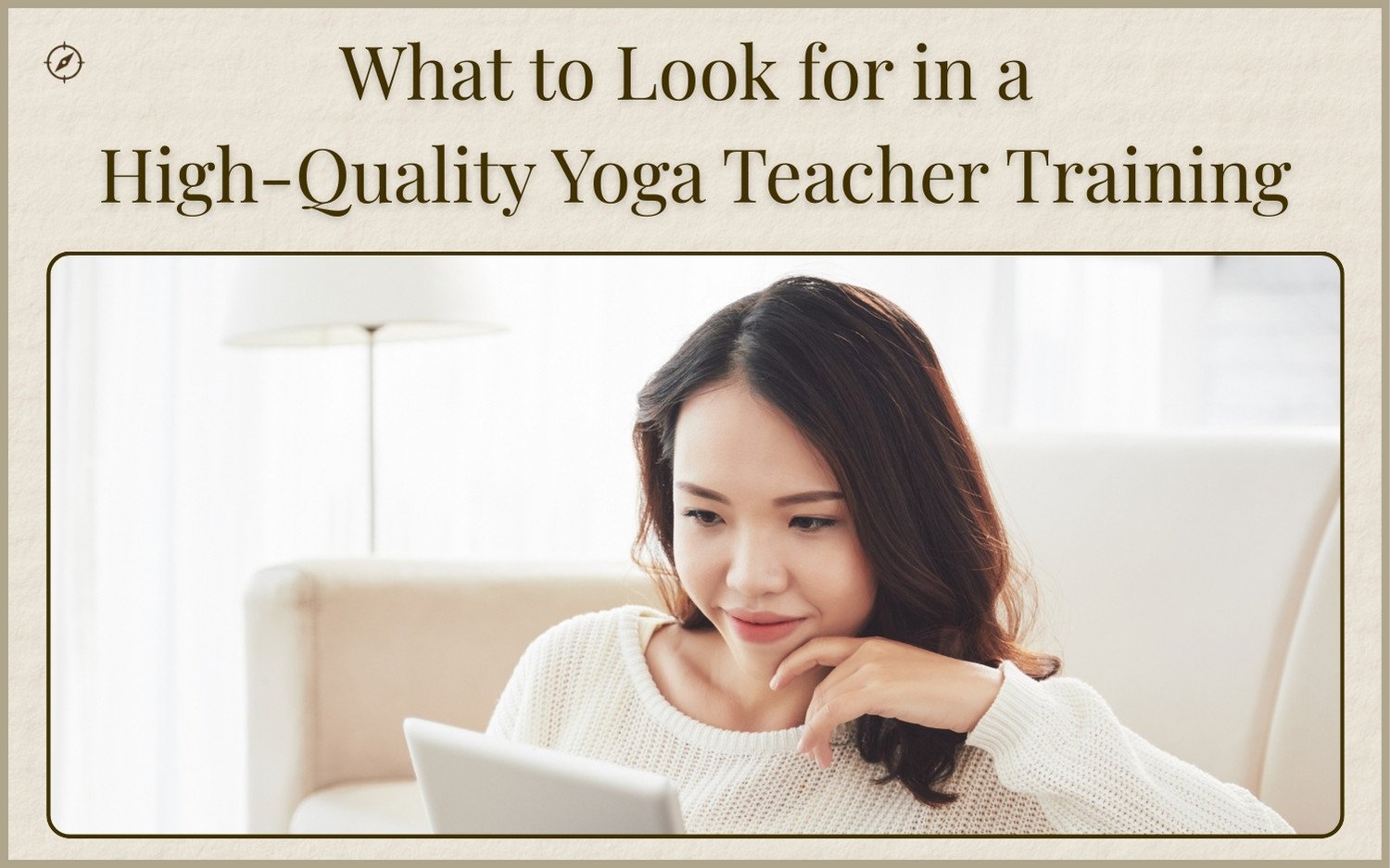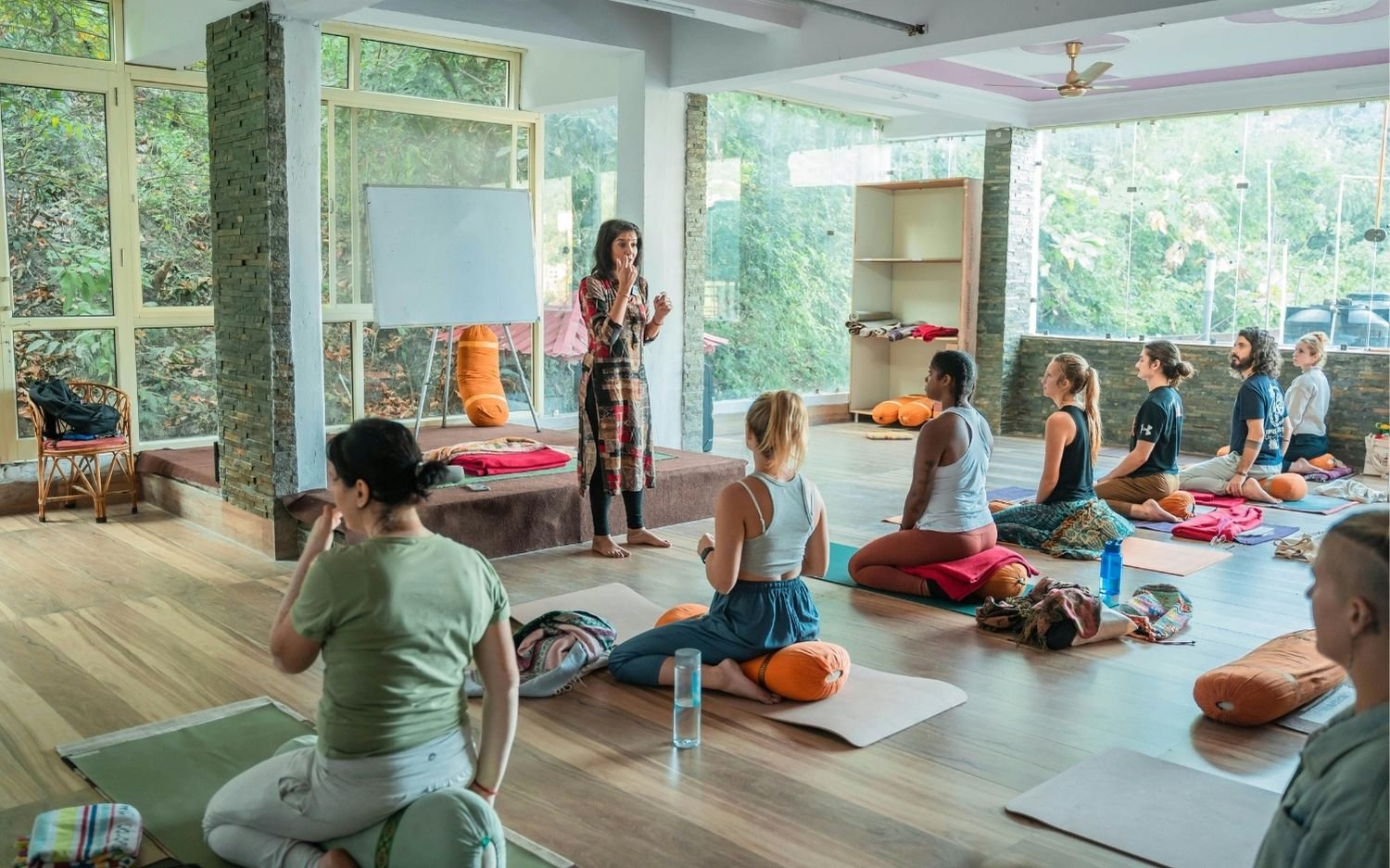What to Look for in a High-Quality Yoga Teacher Training
(and the Difference Between Yoga Alliance and Non–Yoga Alliance)

If you are thinking about becoming a yoga teacher, the right teacher training can make all the difference. A high-quality yoga teacher training shapes not just your skills, but your confidence, teaching style, and connection to yoga’s deeper roots. The challenge is that programs vary widely in quality, focus, and recognition, and it is not always obvious which one will truly prepare you for the journey ahead.
This guide will walk you through exactly what to look for so you can choose a training that matches your learning style, career goals, and personal values. We will also break down the difference between Yoga Alliance–registered and non–Yoga Alliance programs so you can make an informed decision.
This article is part of The Ultimate Guide to Yoga Teacher Training: Challenges and How to Overcome Them. If you haven’t read the main guide yet, start there to explore all 15 topics and get the complete picture for your YTT journey.
Qualified and Experienced Lead Teachers
Your lead trainer is the single biggest influence on your learning experience. Look for someone who has extensive teaching experience, a deep understanding of yoga, and a communication style that resonates with you. Whenever possible, take a class or workshop with them before committing to the program.
Signs of a strong lead trainer:
- A steady personal practice
- Years of consistent teaching experience across different student levels
- Solid grasp of anatomy, philosophy, and teaching methodology
- Professionalism and approachability
- Ability to offer constructive, supportive feedback

The best trainers balance high standards with compassion, pushing you to grow without overwhelming you.
A Comprehensive Curriculum
A well-structured yoga teacher training covers far more than memorizing postures. It should prepare you to teach safely, skillfully, and authentically.
A strong curriculum usually includes:
- Anatomy and biomechanics grounded in evidence-based science
- Asana variations and modifications for diverse student needs
- Sequencing principles and class planning
- Yoga history and philosophy (Yoga Sutras, Bhagavad Gita, and other key texts)
- Teaching methodology and communication skills
- Business aspects of being a yoga teacher
Ask for the syllabus before you sign up, and make sure the program’s learning objectives match your personal and professional goals.
Safe Practice and Evolving Teaching Methods
Yoga is rooted in tradition, but high-quality training also integrates modern understanding of movement, anatomy, and safety. Outdated cues and unsafe adjustments can lead to injuries, so look for trainers who continue their own education and adapt their methods as best practices evolve.
Bonus points for programs that include functional movement principles and trauma-sensitive approaches.
Opportunities for Practice Teaching
One of the most valuable parts of YTT is gaining hands-on teaching experience. The best programs give you multiple opportunities to teach both your peers and real students, with feedback after each session.

Practice teaching should cover:
- Leading short sequences and full classes
- Giving clear verbal cues
- Demonstrating poses effectively
- Offering safe, appropriate assists, adjustments and modifications
If a program has you doing most of your practice teaching in the last few days, that’s a red flag, it should be integrated throughout the training.
Supportive Community and Learning Environment
The people you train with can shape your entire experience. A mixed group in age, background, and experience level can make discussions richer and teaching practice more realistic.
A high-quality training environment will:
- Encourage open discussion and questions
- Foster collaboration rather than competition
- Provide mentorship or support beyond graduation
Read reviews, reach out to past graduates, and if possible, visit the studio or venue beforehand.
Yoga Alliance vs Non–Yoga Alliance Teacher Training
Understanding this difference can prevent a lot of confusion later.
Yoga Alliance Programs
- Require a minimum 200 hours for RYT registration
- Follow a standardized curriculum format
- Recognized internationally, often required for studio jobs and insurance
- Offer designations like RYT-200, RYT-500, and specialty credentials
Non–Yoga Alliance Programs
- Often more flexible, experimental, or lineage-based
- May offer deeper spiritual study or unique formats
- Can be excellent quality, but recognition for employment or insurance may be limited
- Standards for teacher qualifications and contact hours can vary widely

If your goal is to work in mainstream studios or abroad, Yoga Alliance registration can be an advantage. If your focus is personal growth or studying with a specific lineage teacher, a non–YA program might be perfect.
Final Thoughts
Choosing a high-quality yoga teacher training is one of the most important steps you will take on your teaching path. The right program will give you not only the skills and confidence to teach but also a deeper relationship with your own practice.
Take your time researching, ask questions, and make sure the school’s values and methods resonate with you.
This article is part of The Ultimate Guide to Yoga Teacher Training: Challenges and How to Overcome Them
